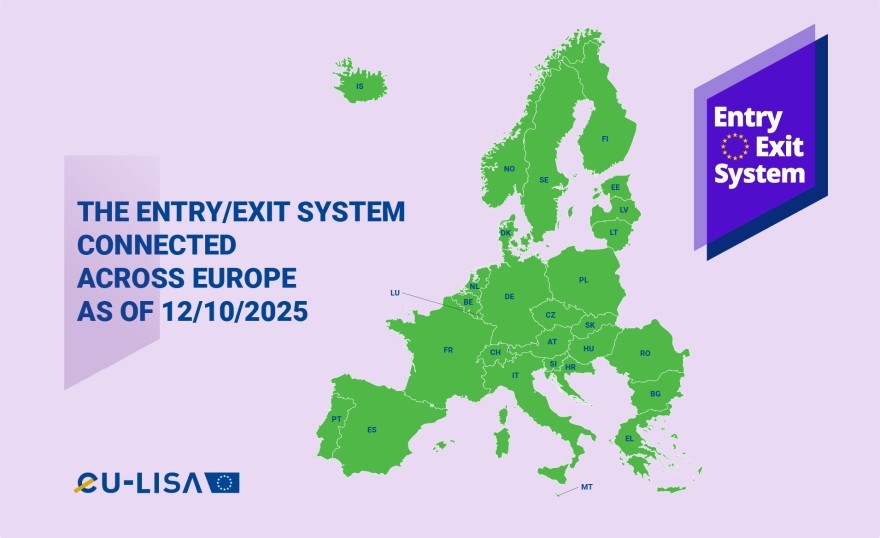Actions

On 12 October 2025, the new Entry/Exit System (EES) entered into operation, marking a new era in European border management. Developed and managed by eu-LISA, the system represents a major step in the digitalisation of Europe’s external borders, replacing manual passport stamping with an electronic registration system.
Progressive Roll-Out Across Europe
The EES went live on Saturday night, 12 October 2025, with Member States connecting in stages throughout the day. While several countries deployed the EES fully from day one, others are introducing it progressively across their airports, seaports and land borders.
During this transition, some border crossing points are already applying the new procedures, while others will continue passport stamping until the switch is complete. Member States have up to 180 days to finalise their deployments, after which the EES will be operational at all external Schengen borders, ensuring harmonised checks across Europe.
A Joint European Effort
The launch of the EES represents a collective achievement at European level. Mandated by EU legislation, the system was delivered through close cooperation between the European Commission, Member States, Associated Countries and eu-LISA.
This milestone is the result of a tremendous collective effort, and I would like to thank all eu-LISA staff, our partners and Member States for their commitment and hard work. The Agency stands fully ready to support the smooth roll-out of the system throughout Europe, ensuring that the EES delivers on its promise to strengthen border management and make travel more secure and efficient, said Mr. Tillmann Keber, Executive Director of eu-LISA.
Together with the upcoming European Travel Information and Authorisation System (ETIAS), scheduled to follow next, the EES forms part of the broader set of EU measures to reinforce security and facilitate travel in Europe.
eu-LISA Supports Member States During the Progressive Roll-Out
Throughout the roll-out phase, eu-LISA continues to play a central role in ensuring that the EES is implemented in a harmonised and efficient manner across the Schengen Area. In close cooperation with Member States and in alignment with their national roll-out plans, the Agency provides reinforced central monitoring and service support to ensure the stability and reliability of the system.
eu-LISA works in close coordination with Member States to guide the gradual introduction of the system at border crossing points. The Agency also adapts its support to specific operational needs and remains in continuous contact with national authorities and its governance bodies to address issues swiftly and effectively.
How the EES Works
The EES is designed to improve the way Europe manages its external borders by replacing the manual stamping of passports with a modern, digital registration system.
For every entry and exit of non-EU nationals into and out of the Schengen Area, the system records the person’s alphanumeric data (such as name, travel document details, nationality and the time and place of border crossing). It also includes biometric identifiers (a facial image and four fingerprints) to ensure accurate identification and to help prevent identity fraud.
All information is stored in the central EES, which is operated by eu-LISA at its technical sites under strict EU data protection and security standards. While biometric collection has been enabled since day one of entry into operation, its use at border crossing points will be phased in progressively, depending on Member States’ national roll-out plans.
The data of each traveller is stored for three years after their last entry, exit or refusal of entry, or for five years if an overstay is recorded. After this period, the data are automatically deleted; if the traveller later returns to the Schengen Area, a new record is created as if it were their first entry.
Background
The Entry/Exit System is one of the EU’s large-scale IT systems in the area of freedom, security and justice. It was developed to modernise the management of the EU’s external borders, help Member States deal more effectively with increasing traveller flows, and improve the detection of overstayers.
For practical information for travellers about the EES, please visit travel-europe.europa.eu


